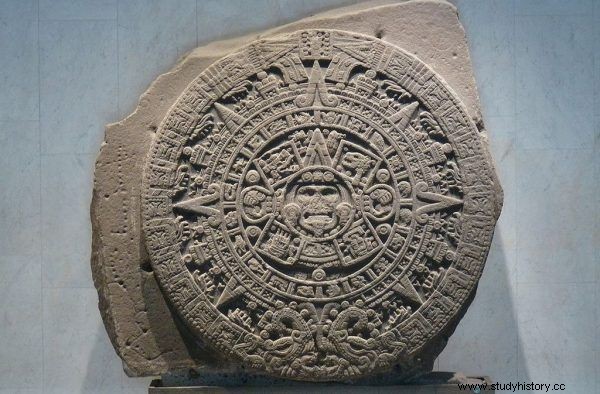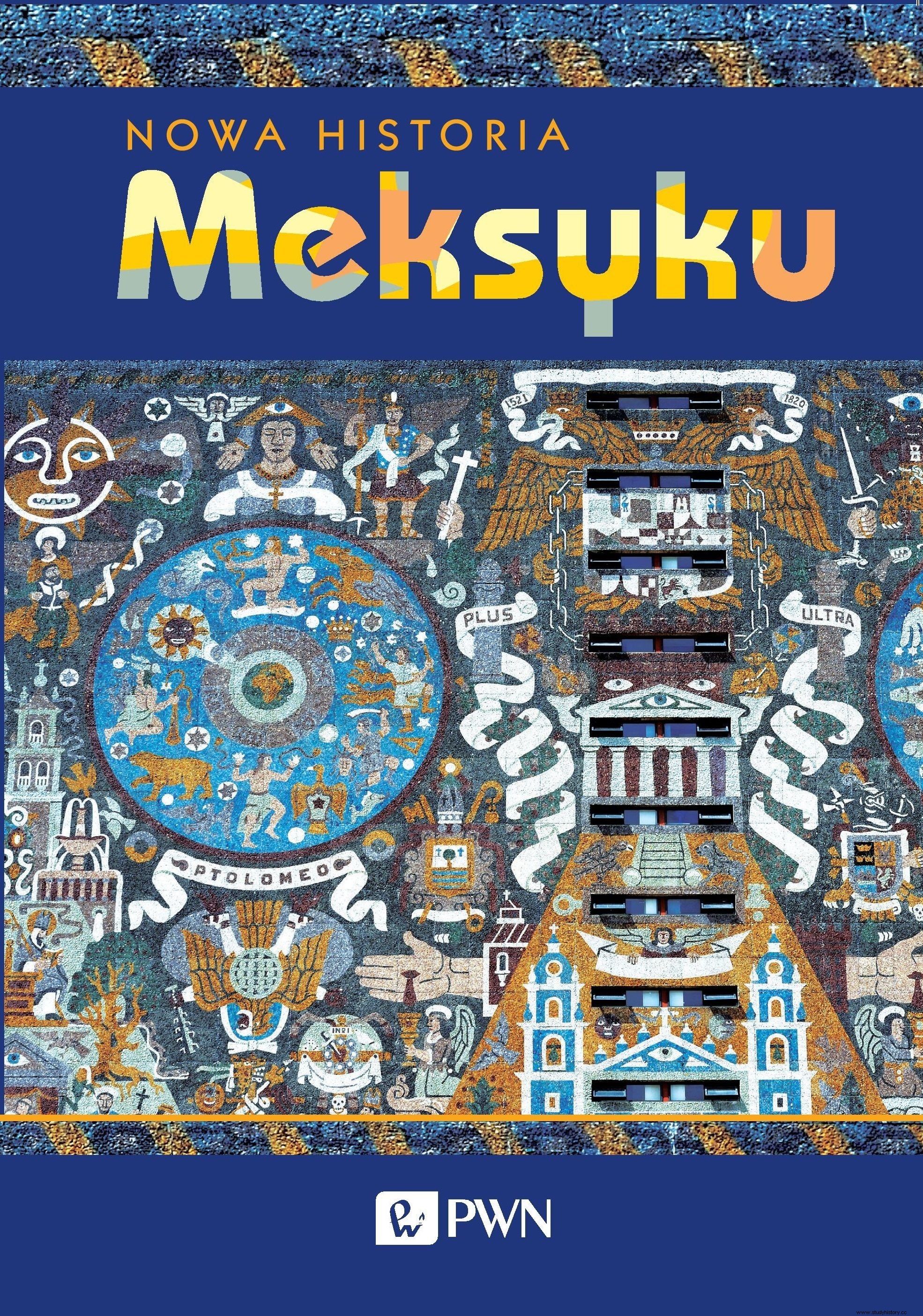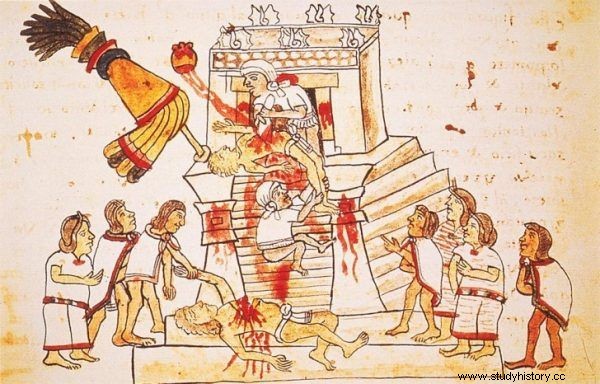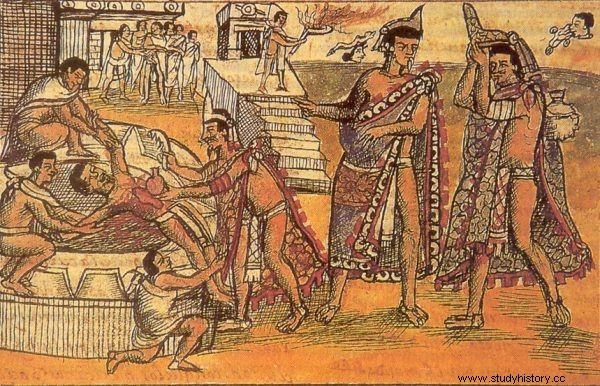We are afraid of the "next day syndrome" on the eve of the New Year. Meanwhile, the Aztecs saw in the upcoming calendar change the threat of hurricanes, attacks by bloodthirsty beasts, and even ... the possibility of complete destruction!
Fortunately, the danger of the apocalypse didn't come every year, but "only" every 52 years. Why so much? The answer can be found in the Aztec calendar ... or rather the calendars, because they had not one but two!
The end is (always!) near
The first one was 260 days long and was used primarily for religious purposes. It was not very suitable for the more prosaic ones:it is difficult to sow a field according to a calendar that has nothing to do with the seasons ... So there was also a second, more "practical" calendar, already counting 365 days. Of course, the end-of-year dates, with such different ways of counting time, usually completely missed each other. But not always. They met once every 18,980 days - this number is the smallest common multiple of 260 and 365. And that was the Aztec "age":18,980 days, or 52 years.
The Aztecs understood time cyclically. Their mythology transmits information about earlier eras and their end. Each ongoing cycle had to end sometime. And with a bang! There were plenty of possible apocalypse scenarios: people devoured by jaguars, hurricane winds, floods and even the fall of the sky to earth .

Stone of the sun, identified by many historians and archaeologist with the Aztec calendar. Most likely, however, it represents the Aztec creation myth (for. Rosemania; lic. CC BY 2.0).
At the same time, the risk of a catastrophe increased with the end of each 52-year period. The Aztecs were starting to get seriously stressed then ... It is hardly surprising, since they believed that the world was on the brink of extinction. And not just any:people were reportedly hunted by hungry monsters resembling skeletons, called tzitzimime. These terrifying beasts threatened not only humans, but also the sun and the moon.
Granary wife
To prevent annihilation, a celebration called toxiuh molpilla was held , that is, "binding the years" or "New Fire ceremony." The Aztecs then got rid of the figures representing the gods. They also put out all fires and drowned the stones from the hearths in water. Pregnant women were locked in granaries so that they would not turn into bloodthirsty beasts that would devour people along with tzitzimime. The children were not allowed to sleep for fear that they might turn into mice.
After sunset, the priests made their way to a hill called Huixchatlan to observe the sky. At that time, the entire population of the Valley of Mexico was anxiously anticipating the future. It was only possible to breathe a sigh of relief when the constellation of the Pleiades crossed its zenith. This meant that the world would continue to exist for at least 52 more years.

The article is based, among others, on the recently published "New History of Mexico (PWN Scientific Publishers 2016).
This good news was made known to the rest by sacrificing a slave whom the priests were bringing with them. After all, this was what their slaves served them for ... This is what the authors of "New Mexico's History" write about their meaning:
From an economic point of view, slavery did not play an important role in Mesoamerica. Few people were enslaved, and their situation could be twofold. There were house slaves who did work such as fetching wood and water, and slaves for sacrifices; their only destiny was to die on certain occasions.
The unlucky man who had been appointed for the end of the century celebration faced a terrible fate. First, a chosen priest, using a wooden fire drill, started a fire on his chest. Then a huge fire was lit from this bush. Finally, the slave's chest was cut open and his heart was torn out that were thrown into the fire. Moments later, the rest of his body joined him as well.

The Aztecs believed that only bloody human sacrifice could stop the end of the world (source:public domain).
But we will live yet…
Seeing the fire lit by the priests, the people began to celebrate. However, it is difficult to find many similarities to our New Year's Eve. Everyone had their earlobes incised, making an offering of their own blood. Even small children and babies were not spared.
At the same time, messengers spread the holy fire to the temples and from there the inhabitants took it to their homes. What about champagne, vodka or at least a small beer? Unfortunately! Alcohol consumption was punishable by death, so the Aztecs started the new "age" without a hangover.
Of course, no Aztec holiday would be possible without… mass human sacrifice. According to reports, during the last Aztec ruler, Motecuhzoma, as many as 2,000 people were sacrificed on the occasion of the New Fire ceremony. It took the priests all day to kill so many prisoners. It made them literally drenched in blood. But it was still not a record toll.

Aztec priests literally dripped with the blood of sacrificed slaves (source:public domain).
In The New History of Mexico, you can find an account of the impressive accomplishments of another ruler. Ahuitzotl, who ruled shortly before Motecuhzoma, was famous not only for his cruelty during his military expeditions. He was to celebrate his coronation with a sacrifice of ... 80,000 prisoners! The number seems exaggerated, but is given by many sources - the authors report.
It is also worth mentioning that the Aztec calendar was "reset" every 52 years. Unlike the Maya, who used the Long Count (which did not end in 2012!), The Aztecs did not have a system that could count time beyond their "age". This is a serious problem for historians. The Aztec date 1-Reed may mean in our calendar the year 1519 ... or 1467. or 1415. And so on.
Fortunately, the current 52-year cycle does not end until 2027. But maybe keep an eye out for tzitzimime ... just in case.
Bibliography:
- Erik Velásquez García et al., Mexico's New History , PWN, Warsaw 2016.
- Justyna Olko, Aztecs, series Mythologies of the world , New Media Concept, Warsaw 2007.
- Justyna Olko, Mexico before the conquest , PIW, Warsaw 2010.
- Frances Frei Berdan, The Aztecs of Central Mexico. An Imperial Society , Wadsworth, Belmont, California 2005.
- Michael E. Smith, The Aztecs , Blackwell, Malden-Oxford 1998.
Buy the book with a discount on the Publisher's website:

